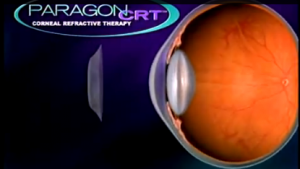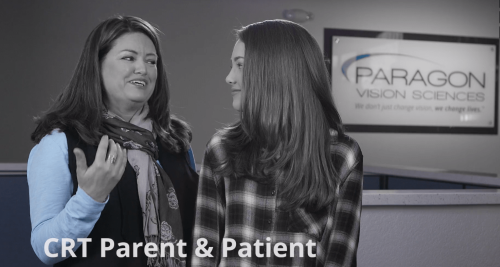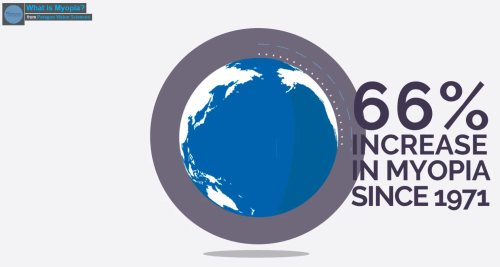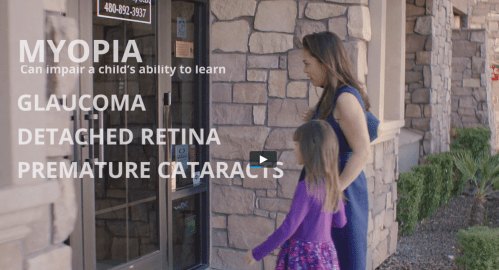What is Myopia?
- Myopia is also called nearsightedness.
- In many people, myopia occurs when the eyeball grows too long, resulting in light focusing in front of the retina rather than on it.
- It causes distance vision to be blurry but near vision remains clear.
- Causes: still unsure, but likely genetic and environmental (more reading, computer, less outdoor).
Sources: Jones 2007; Lyhne 2001; Dirani 2006; Hammond 2001; CLEERE study; Tay 1992; Paritsis 1983
- In the US, more and more people are having myopia (42% of population in 2010, doubled from 1970).
Sources: Vitale, S et al. 2009. Increased prevalence of myopia in the United States between 1971-1972 and 1999-2004. Arch Ophthalmol 127(12): 1632-1639
Why is it important to prevent myopia from getting worse?
- Although vision can be made clear with corrective lenses and refractive surgery, the longer eyeball remains a risk factor for many eye diseases, some can lead to permanent vision loss:
Retinal detachment, choroidal neovascularization, cataracts, glaucoma.
Sources: Ogawa 1988; Vongphanit 2002; Lim 1999; Marcus 2011
How do we slow down myopia progression?
- Various myopia control treatments can slow down or even stop the progression of myopia.
- Specialized, daily-disposable, soft contacts called MiSight®.
- OrthoK hard contact lenses (CRT): has the benefit of slowing down myopia and giving clear vision without wearing corrective lenses.
- Low concentration Atropine eye drops.
How long do we have to treat?
- It depends. Typically we treat until the age of 18, or until the prescription stops changing for at least 2 consecutive years.
- If your child does not have myopia but there is a strong history in the family, spending more time outdoor can prevent myopia from developing.
- If you notice that your child’s myopia is getting worse, you should bring them in for an eye exam. We will be happy to recommend the most appropriate treatment.
For more information, please see the National Eye Institute webpage:
https://nei.nih.gov/health/errors/myopia
1. MiSight Daily Contacts
CooperVision’s MiSight® 1 day is the first and only contact lens FDA-approved* to slow the progression of myopia in children aged 8-12 at the initiation of treatment. Children can apply the soft, daily wear, single use contact lenses to their eyes in the morning, wear them for at least 10 hours during the day, then dispose of them in the evening. The FDA-approved* lens is available as part of a comprehensive myopia management approach offered by CooperVision and participating eye care practitioners. Here is a video by Dr. Smith explaining how it works.
Click here for the 3-year clinical study details.
2. Ortho-K or CRT 
2. Low concentration Atropine eye drops
Atropine is a medication that can be used as a topical eye drop to limit myopia progression. It is used in low concentrations (typically 0.01, 0.025, or 0.05%) to slow the growth of the eye beyond normal levels. Research over the past 20 years has proven its effectiveness, however the degree of success has been inconsistent among studies. Atropine treatment is usually reserved for patients with glasses prescriptions outside of the range for contact lenses, or as a supplemental treatment in patients who still show some progression with contacts. These eyedrops are used once daily before bed, making them a convenient option with little maintenance. They also can be used for younger children who may not yet be ready for the responsibility of contact lenses.







* Please note that we are closed the 1st and the 4th Saturday of every month